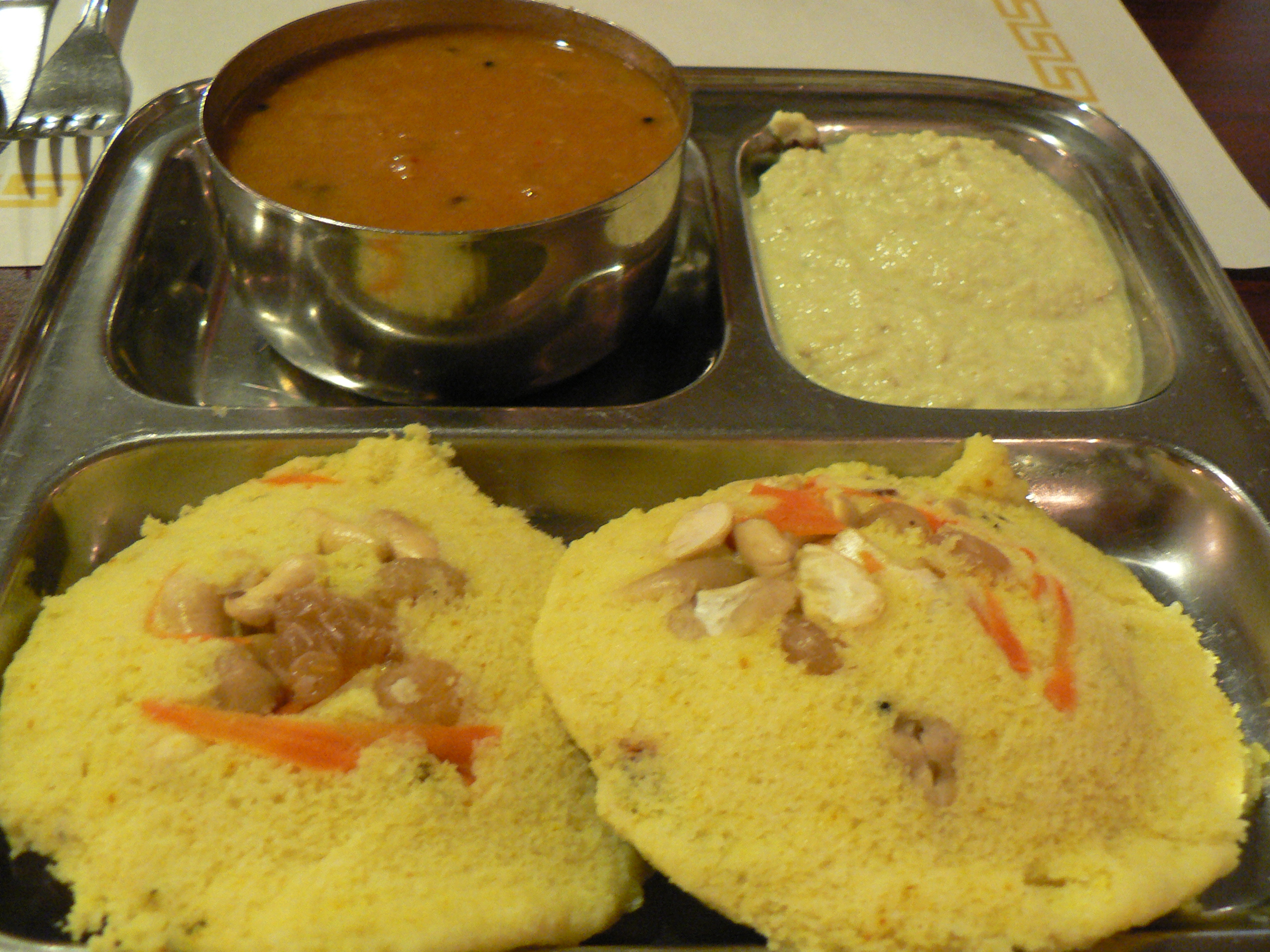

For me breakfast is a really important meal of the day. I’m not good to be around when there is no breakfast, just like the Hobbits, breakfast is a must and it can be taken at any time of day. At home it is toast, cornflakes, muesli with extra nuts and fruit, all washed down with lashing of cold milk. And, of course, my morning cup of tea. Whilst I am not usually a big fan of full English cooked breakfasts I do occasionally indulge, especially on holiday, and have been known to quaff down scrambled eggs or kippers, and when it comes to bacon and sausage there just has to be black pudding dipped into a runny egg yolk!
Here in India, folks tend to eat cooked food at every meal they afford to have, as does much of the world. In Orissa the most common breakfast dish seems to be idli. This is made from urad dal (split black lentils) and rice steamed into patties and served with curried vegetables and/or chutneys. I haven’t made this http://www.tarladalal.com/Idli-1652rrecipe myself but have eaten it at roadside dhabas. Taste wise it is Ok, for me the idli itself is a bit bland, and very filling, but of course it can be spiced up with all sorts of added goodies from coconut chutney, to paneer, to curried vegetables, or served with sambhar
I’ve never adapted to eating cooked breakfasts anywhere so India was always going to be a challenge. When I first arrived I struggled with this meal initially resorting to the local bread, rapidly forgoing the local jam (too sweet) , settling down to honey and toast. But it wasn’t seeing me through the day, and finally I gave up even on the bread (like dry crispbread without the taste). Imagine my delight when I found Cornflakes: but then you should have seen my face as I tasted them and found them to be so sweet, clearly adapted for the local market tastes. Friends to the rescue and goody boxes arrived containing muesli. Great, but no way could the supply balance the demand, so seeking out  alternatives I noticed porridge – I can’t remember now whether this first find was in Koraput or Khalahandi, but certainly both places saw me coming home with large 2l bottles of the stuff. So from then on muesli was the treat and the daily breakfast started to be porridge. Funnily enough not something I ever ate at home, although I remember my father ate it every day – made the Scottish way with water and salt, and served very thick. Not to my taste. Here it has developed into a standard recipe made with milk, raisins, cashews, a teaspoonful of sugar to 10 of oats, plus a small stick of cinnamon, made so it is still slightly runny. Such a filling breakfast it gets me through the morning no problem. Why did I never eat this at home?!
alternatives I noticed porridge – I can’t remember now whether this first find was in Koraput or Khalahandi, but certainly both places saw me coming home with large 2l bottles of the stuff. So from then on muesli was the treat and the daily breakfast started to be porridge. Funnily enough not something I ever ate at home, although I remember my father ate it every day – made the Scottish way with water and salt, and served very thick. Not to my taste. Here it has developed into a standard recipe made with milk, raisins, cashews, a teaspoonful of sugar to 10 of oats, plus a small stick of cinnamon, made so it is still slightly runny. Such a filling breakfast it gets me through the morning no problem. Why did I never eat this at home?!
Then to my surprise in the Guardian newspaper is an article that Pret a Manger the UK sandwich chain is selling porridge no less and selling 50,000 pots per week top boot contributing to their increased turnover! I wonder how much they are it selling for? So am I a late adopter or an early adopter, mmmh? I think just yum yum. Perhaps I should try and persuade Moona, our local dhaba walla , to add this to his repertoire.
